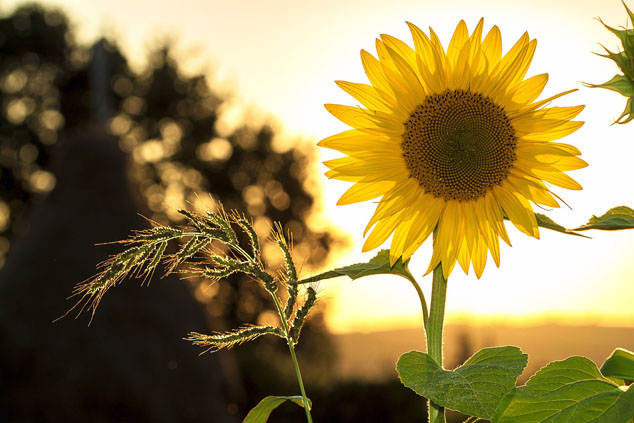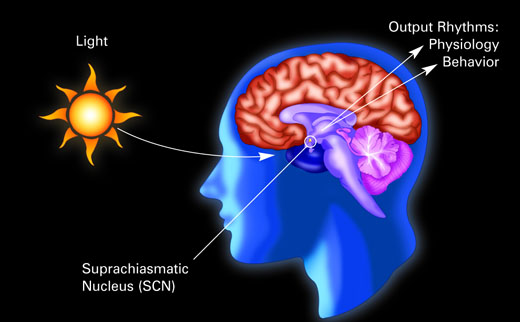 Okay, that is just a fancy term to say fear of sunlight. Such fear does, indeed, drive a massive occurrence of modern diseases.
Okay, that is just a fancy term to say fear of sunlight. Such fear does, indeed, drive a massive occurrence of modern diseases.
If you avoid sunlight, you already have or are on the way to getting one or more Diseases of Civilization because of your fear of it. It trumps diet, exercise, and supplements. The solution? More of the right light at the right times, and less of the wrong light at the wrong times.
Dispense with the Dogma About Sunlight
Does any of this sound familiar?
Lather on sunblock.
Stay out of the sun.
Wear protective sun glasses.
Cover up.
Yada, yada, yada.
Omigod! The sun has become your enemy!
I even have some golfing buddies who wear long-sleeved shirts and long pants outdoors in the summer … when it is 110oF! The fear of sunlight is a powerful one. Unfortunately, it is based on some of the most simplistic thinking you will ever encounter in modern medicine. And that is saying something.
Here is a clue: If you have enough cholesterol and sulfur in your skin, you can make plenty of vitamin D3 sulfate. These substances are the keys for skin health in many ways, including how sunlight affects it. Of course, getting enough vitamin D takes some sunlight in the first place.
In spite of the ease and low cost (i.e, free) of making vitamin D in skin, nearly everyone is deficient in this vitamin/hormone.
Low cholesterol undermines the whole skin-protection system. If you are lowering your cholesterol artificially (e.g., with statin drugs), then your skin is already in danger.
Your body can almost not get enough sulfur from food. The Major Sources of Dietary Sulfur might be sufficient if you ate enough of them every day. Most people don’t. (As usual for government recommendations, the RDA for sulfur is a gross underestimate.) Supplementing with a few grams of MSM every day is a great way to make up for this insufficiency.
It doesn’t take much searching to find out how sunscreens don’t measure up to simplistic warnings about sunlight. E.g., take a look here: It’s poison: Gisele Bundchen angers cancer experts by saying people shouldn’t wear sun lotion… You can easily find lots of articles like that one.
You can also find the flip side, i.e., articles about the health benefits of sunlight, including UV light.
GASP! UV light is good for health? Yesiree!
Yup, we are talking about that ol’, dangerous stuff that supposedly ruins your skin and causes cancer, cataracts, and so much more! The very same.
Just to get you started toward grasping that thought, here’s one health benefits article for you: Sunshine could benefit health and prolong life, study suggests.
Now let’s take a look at some details that you should know so you can decide what you want to do about getting all the nourishing sunlight you need every day.
Got (Circadian) Rhythm?
Sometime, ages ago, you may have heard in biology class about circadian rhythms. The term simply refers to how life processes operate around a 24-hour cycle. It is primarily a day-night cycle that governs the peaks and valleys of hormone signaling that runs everything in your body. It works in all animals. Plants, too.
In the good old days (weren’t they all?), way before the invention of the light bulb, the day-night cycle that we were exposed to was associated with sunrise and sunset. We did all kinds of things outdoors once the sun came up. Light in the morning sun signaled us to get going for the day.
Then we stopped doing those things when the sun went down. Darkness signaled time to hunker down and get some sleep.
A whole raft of hormones came and went as light came and went each day, then came again the next day.
We evolved in this environment. We are adapted to it.
It turns out that the timing of light and dark is critical.
Morning Light
Light in the morning, starting at sunrise, goes right to the retina in the back of the eye. The energy from that light alerts a tiny part of the brain, called the suprachiasmatic nucleus (SCN), that it is time to get the day started. The SCN is the master clock that gets everything going throughout your body right on time.

All it takes is sunshine in the morning to get the master clock working.
The intensity and duration of light spectra vary tremendously, depending on the season and your latitude. Furthermore, the amount you need will also vary, depending on your own hormone balance and overall health. It is hard to know ahead of time what strategy will work best for you.
In my case, my best days start out with a cup of bulletproof coffee and the morning paper, sitting in a chair on the lawn where the first rays of morning sunshine appear. Barefoot, of course, to plug into the antioxidant power of grounding.
One more thing: the body senses light not only through the eyes but also through the skin. We know that vitamin D is synthesized in the liver and kidney through the skin’s exposure to UV-B light. So when you’re going outside for your sunlight in the middle of the day, be sure to expose as much skin as possible to the sun.
This is where folks at the local nudist colony have a real advantage.
Main Lesson: Morning sunlight exposure to your skin and eyes is vital for optimal functioning of your circadian rhythms.
If you spend your life indoors, at least go outside for brief spells during the day.
If you wear glasses, most of which absorb UV light, take them off outdoors. If you have sunglasses, don’t wear them.
Glass in windows (cars, houses, offices) generally filters out UV light (mostly UV-B). You have to get outside to get the full benefit of sunlight.
Evening Light
What happens when the sun goes down? A lot of goodies centered around infrared light and the structure of water in mitochondria and on enzyme surfaces are important here. This topic comes from the land of biophysics and the quantum behavior of electrons and photons. Thank your lucky stars that I will NOT be delving into that right now. Later, for sure.
What is most important for understanding the effects of evening light on circadian rhythms is not so much what to do as what not to do.
Imagine those good ol’ days again, when evening light was from candles, firelight, or the moon. All good.
Now fast forward to present day and what do we have? Indoor lights, TVs, computers, tablets, e-readers, cell phones … just for starters. Fluorescent bulbs (including those godawful CFLs) and LEDS are just a couple of the main types of lighting.
What these light sources have in common is THE WORST kind of lighting for your circadian rhythms at night … blue light.
When evening blue light hits your retina after sunset and signals your SCN that it is time to start your day, you send your body into hormone hell.
WILL MAKE YOU SICK AND DIE YOUNG!
It will ruin everything you do to be healthy. EVERYTHING. Nothing else you do can overcome this hormone imbalance. Diet, exercise, good thoughts, vitamins, even morning sunshine … nothing.
Basically, night time blue light tells your SCN that it is time to start the day right when you should be getting ready for a good night’s sleep. Right when it is actually time to start your melatonin release and diminish the day’s cortisol output. Blue light destroys melatonin and drives up your cortisol levels before bed. This is an awful combination for getting good sleep.
Sleep is restorative. Blue light toxicity will ruin it.
What are some of the consequences of this pattern?
Here is a short list:
- Bad moods
- Perpetual fatigue
- High rates of cancer
- Heart disease
- Obesity
- Insulin resistance (leading to diabetes)
- Leptin resistance
- Mental degeneration and instability
- Memory failure
How about PTSD? Autism? Autoimmunity? Susceptibility to infection? All made worse by blue light at night.
By the way, blue light toxicity adds to the massive health challenges we already face from exposure to all of the non-native electromagnetic fields that surround us … from cell phones to wi-fi, dirty electricity, smart meters, electric blankets, high-power lines … the list seems endless.
Need I go on?
Unlike the issue with sunshine, where we need to get more in the morning, the issue of blue light at night is driven by the need to get less.
In the extreme this would mean no artificial lights after sundown. Turn off and unplug your TV, laptop, e-reader, cell phone, etc. Use only candles and firelight. Oh, and no digital alarm clocks, either.
Yeah, I know. Good luck with all of that.
Your incentive to do any of that corresponds to your desire to be healthy for a long time. It’s up to you.
Resetting Your Inner Clock
The solution to fixing our sleep is simple … eliminate artificial light at night. How long does that take? One possibility came from a 2013 study that found just a week of camping with no artificial lights (not even flashlights) re-synchronized the circadian clocks with the timing of sunrise and sunset.
Not up for a camping trip?
Here is a simpler strategy: wear blue-blocking glasses after sundown. They are inexpensive from Amazon. I found a pair for about 7 bucks that I can wear over my regular glasses, here.
Many websites offer blue blockers, plus non-blue lights (even CFLs) to change out your regular light bulbs.
Although this is a simple thing to do, it is not as effective as getting NO blue light exposure at all in the first place.
Bottom Line
Heliophobia in the morning and early afternoon will drive you to disease.
Blue light after sundown will drive you to disease.
In a nutshell, this simply means …
- Increase exposure to sunshine in the morning, middle of the day, and late afternoon.
- Decrease exposure to high blue artificial lighting all day and into the night.
Do what it takes. It’s really pretty simple. Your health and your life depend on it.
Comments or Questions?
I’d love to hear from you. This and every other post here provides a comment section at the end of the post, exactly for that purpose.
So, by all means, leave me your thoughts.
I would be especially grateful if you point out any flaws in my logic, factual errors, or ordinary typos. (I’ll give you a little ‘huzzah’ in my heart.)
Then I’ll respond as soon as I can.
All the best in natural health,
![]()
Statements on this page have not been evaluated by the Food and Drug Administration. Information here is not is not intended to diagnose, treat, cure, or prevent any disease.
I may receive a commission for purchases made through those links.
This doesn’t change the cost to you.
Dear Dennis;
The Energy Dept. will implement a ban for retailers from selling “certain” incandescent light bulbs starting August 2023.
Take care.
Thanks for the heads up, Anyimar. This is certainly a trend I’ve noticed over the past few years. It reflects a desperate need for energy conservation without considering all the consequences. No surprise there. Fortunately, not all CFLs are high blue. I can still find yellow ‘bug’ lights at local hardware stores. That’s what I use in my bedside reading lamp.
Cheers,
Dennis